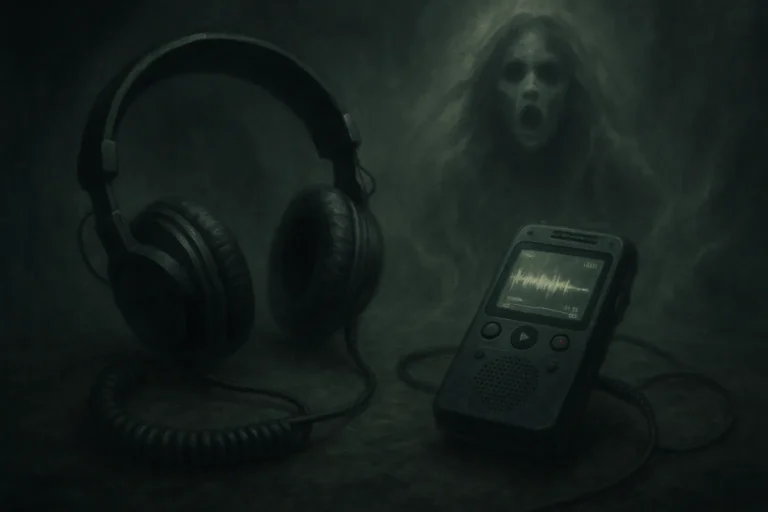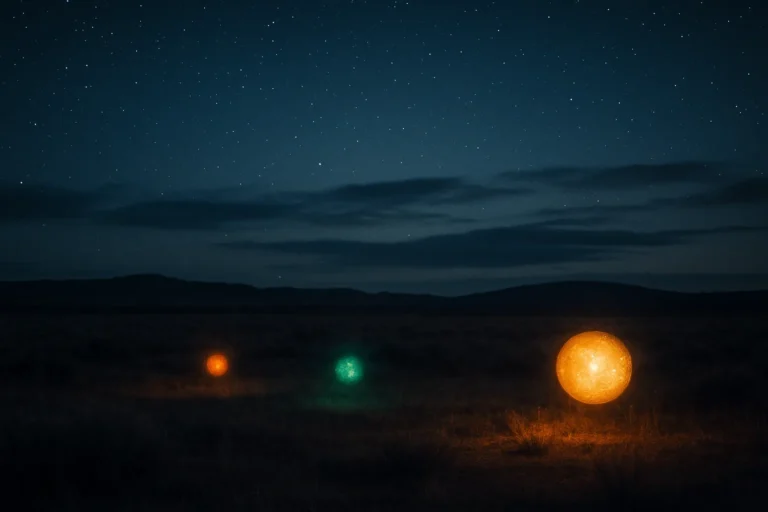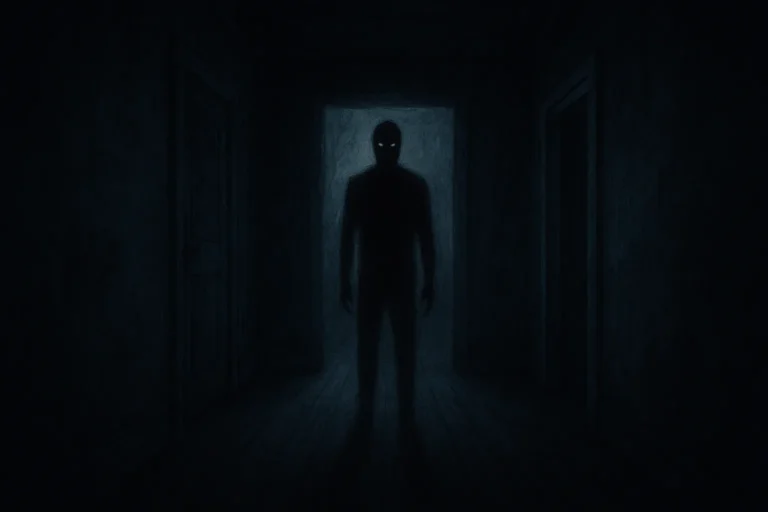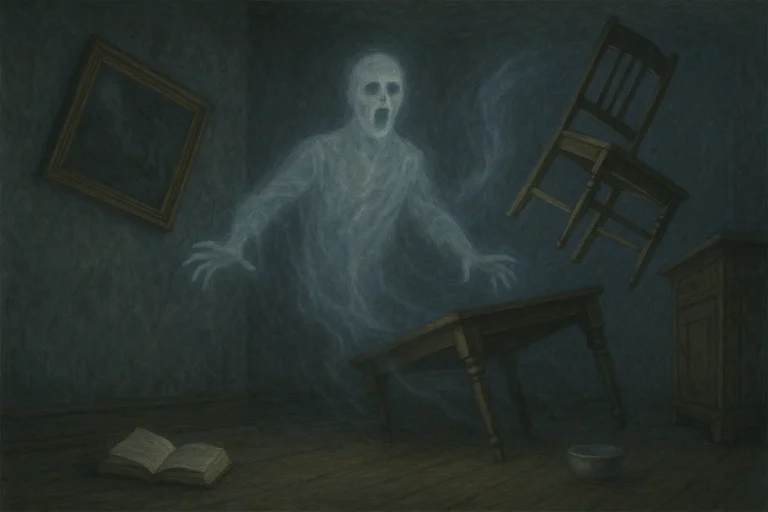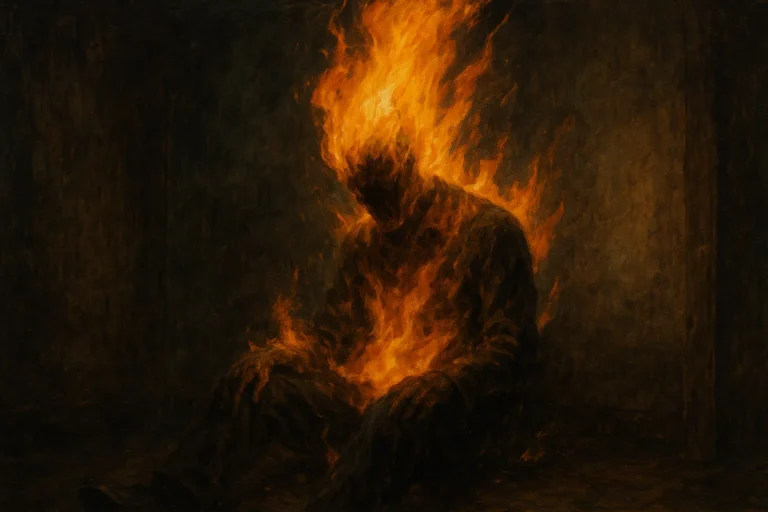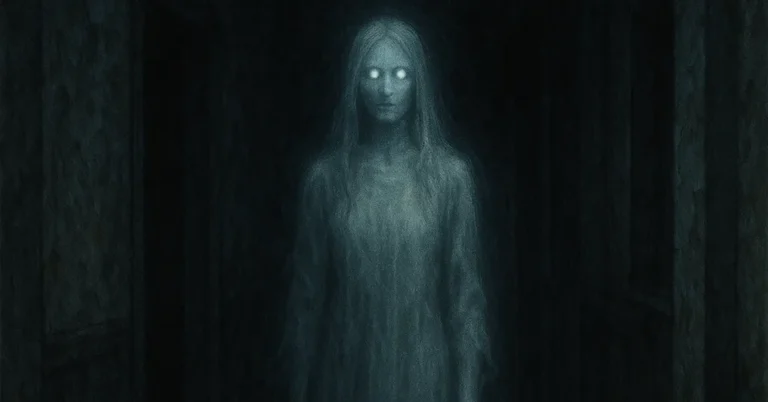The Hat Man: Shadowed Silence in the Dark
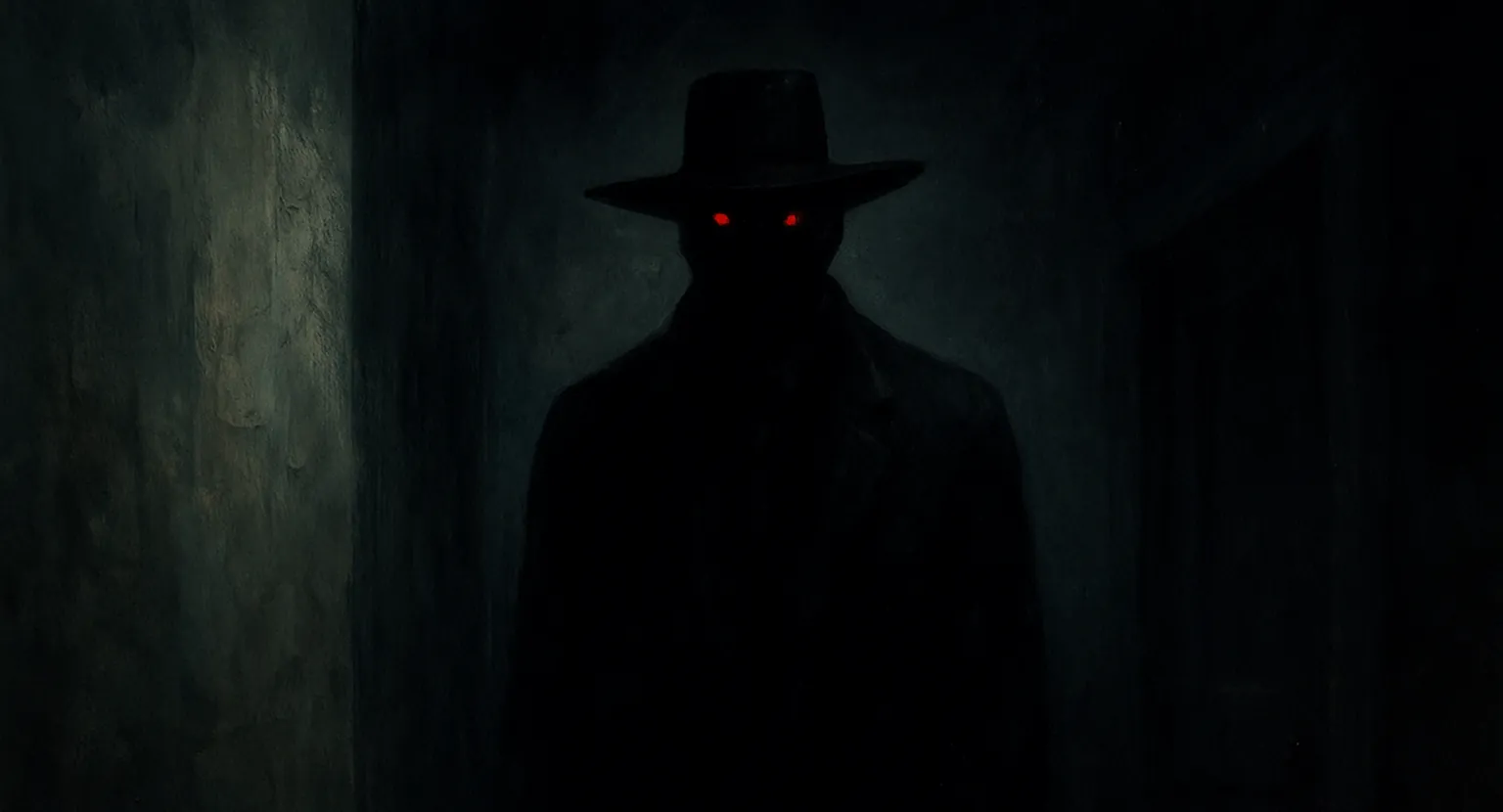
You’re lying in bed. The room is quiet, still, perfectly normal — until you realize you can’t move. Your body is frozen, your breathing shallow. Panic sets in. You sense something standing nearby, watching. Then, in the corner of your eye, you see him. A tall, dark figure cloaked in shadow, wearing a wide-brimmed hat. He doesn’t speak. He doesn’t move. He just stands there… staring.
You’re not alone. Thousands of people around the world have reported seeing the same figure, often during episodes of sleep paralysis. No face, no eyes, just a silhouette and the unmistakable outline of a hat. They call him The Hat Man, and his presence has terrified people across cultures, countries, and decades.
But who — or what — is he?
🎩 A Shared Nightmare
The Hat Man is most commonly reported in cases of sleep paralysis, a condition in which a person wakes up but finds themselves unable to move. It’s often accompanied by vivid hallucinations, a crushing weight on the chest, and the overwhelming feeling of a malevolent presence nearby. While these symptoms are well-documented by sleep researchers, the specific imagery reported — especially the shadowy man in a hat — defies simple categorization.
What’s most chilling is how consistent the descriptions are. People from vastly different backgrounds describe the Hat Man in nearly identical terms: tall, solid black, with a trench coat or cloak and a wide-brimmed hat. Some say he stands in doorways. Others say he approaches the bed. A few claim he leans in close, as if studying them — and they feel a profound sense of dread unlike anything else.
These aren’t just stories told secondhand. They’re deeply personal, often traumatic accounts, many of which are shared reluctantly. Because the experience feels so real.
🕶️ More Than a Shadow
While The Hat Man is often considered a subset of the “shadow people” phenomenon — dark humanoid figures seen during altered states — many believe he’s something different. Shadow people tend to appear quick and elusive, darting just out of sight. The Hat Man is more deliberate. He lingers. He seems to observe.
Some even report seeing him while fully awake and alert, not during sleep paralysis at all. In these cases, his appearance still sparks intense fear, but he leaves no physical trace. Lights may flicker, the air may feel thick or charged, but there are no footsteps, no spoken words. Just silence and stillness — and that terrible feeling that he’ll return.
So what separates him from an overactive imagination? Could a figure this specific really emerge from our collective unconscious?
🧠 Science and Sleep Paralysis
From a scientific perspective, The Hat Man is often explained as a product of the brain’s reaction to sleep paralysis. During REM sleep, the body is naturally paralyzed to prevent us from acting out dreams. When someone becomes conscious before this paralysis lifts, the result is terrifying — you’re awake, but your body isn’t. In this state, the brain can generate vivid hallucinations, especially of threatening figures.
The amygdala — the part of the brain responsible for fear — kicks into overdrive, trying to make sense of the paralysis. The result can be a full-blown terror response, complete with imaginary attackers.
But this still doesn’t answer the biggest question: why do so many people see the same thing?
There’s no universal cultural reference for a man in a wide-brimmed hat. He’s not based on a specific ghost story or myth. And yet, people from Europe to the United States to Asia report nearly identical encounters. Could this consistency point to something more than just neurological activity?
🧥 Theories from the Fringe
Among believers, theories about The Hat Man’s identity range from spiritual to extraterrestrial.
Some suggest he’s a demonic entity — a shadow being that feeds on fear and manifests during vulnerable moments. In this view, his silence and motionlessness are part of his psychological manipulation. He doesn’t have to speak to terrify you. He is the fear.
Others think he might be connected to alien abduction lore. His motionless presence, the paralysis of his victims, and the emotional detachment all bear some similarities to descriptions of “greys” or other non-human visitors. Could he be a form of interdimensional observer? A being who slips into our reality during altered states of consciousness?
Still others link him to ancient archetypes — like the Grim Reaper, or the “man in black” from European folklore who appears before death or disaster. The hat, in this theory, isn’t just a visual detail. It’s symbolic. A marker of authority. Of menace.
Could The Hat Man be a modern version of an old warning — a figure that’s always been with us, wearing different clothes for each generation?
🕯️ Encounters That Linger
What truly sets The Hat Man apart from other paranormal phenomena is the emotional residue he leaves behind. Many people who’ve seen him describe the encounter as the most terrifying experience of their lives. And the fear doesn’t fade. Some continue to see him for years, often during times of stress, illness, or emotional trauma.
There are even stories of generational sightings — where a parent saw him as a child, and then decades later, their own child describes the same figure. No shared stories. No prompting. Just a black silhouette and that signature hat.
One Reddit user wrote, “I’d never told anyone about my experience. Then one day my daughter asked if ‘the tall man with the hat’ was going to come back. I nearly dropped my coffee.”
Is it mass hysteria? A psychological blueprint hardwired into our brains? Or is The Hat Man real in a way we don’t yet understand — a presence that walks through our darkest moments, always watching, always waiting?
🕵️ Watching from the Shadows
In the end, the mystery of The Hat Man straddles the line between sleep science and supernatural terror. He might be a figment of the mind — a byproduct of chemistry, trauma, or cultural pattern recognition. Or he might be something else entirely.
What makes him so unnerving is his silence. His stillness. The way he doesn’t do anything, but still manages to paralyze us with fear. And whether he’s real or imagined, his image — tall, featureless, hat casting a shadow over empty eyes — stays with you.
So if you ever find yourself awake in the middle of the night, unable to move, and feel the weight of unseen eyes pressing into you…
You’re not the first. And you probably won’t be the last.

